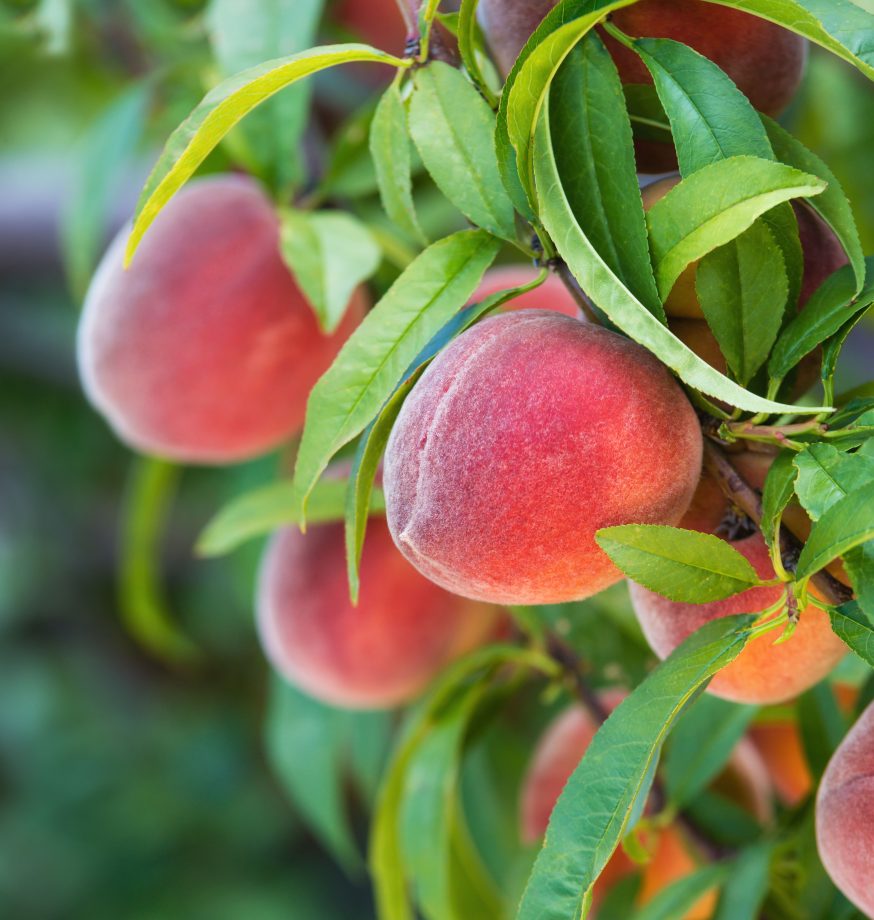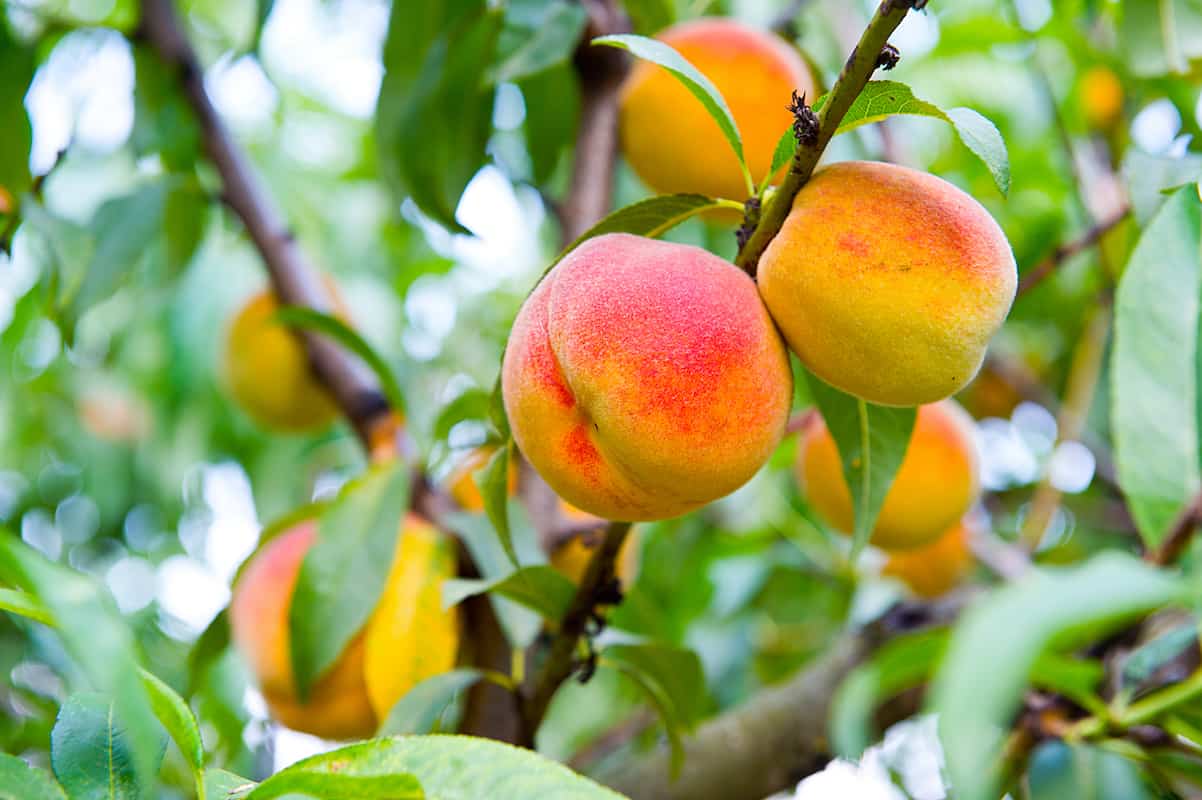Understanding the Factors that Influence Peach Yield
When it comes to growing peaches, many factors can impact the number of fruits a tree produces, ultimately answering the question of how many peaches per tree can be expected. Climate, soil quality, tree variety, and pruning techniques are just a few of the key factors that influence peach production.
Climate plays a significant role in peach yield, with ideal temperatures ranging from 35°F to 75°F (2°C to 24°C). Regions with mild winters and warm summers tend to produce more peaches per tree. Soil quality is also essential, as peaches require well-draining, fertile soil with a pH between 6.0 and 6.5. Tree variety is another critical factor, with some varieties naturally producing more fruit than others.
Pruning techniques are also vital in promoting healthy growth and increasing peach yield. Proper pruning helps to control the tree’s size, promotes air circulation, and allows more sunlight to reach the fruiting branches. By understanding and managing these factors, peach growers can optimize their tree’s productivity and enjoy a bountiful harvest.
The Average Peach Yield: What to Expect from Your Tree
When it comes to growing peaches, understanding the average peach yield per tree is essential in managing expectations and optimizing productivity. The number of peaches per tree can vary greatly depending on factors such as tree variety, growing conditions, and climate. On average, a healthy peach tree can produce between 60 to 100 peaches per year, with some varieties producing as many as 200 peaches per tree.
Different peach varieties have varying levels of productivity, with some dwarf varieties producing as few as 20 peaches per tree, while larger varieties can produce upwards of 150 peaches per tree. Growing conditions also play a significant role, with trees grown in regions with mild winters and warm summers tend to produce more peaches per tree. For example, peach trees grown in California can produce an average of 80 peaches per tree, while those grown in Georgia can produce an average of 120 peaches per tree.
Understanding the average peach yield per tree is crucial in determining how many peaches per tree can be expected, and making informed decisions about tree care and management. By knowing what to expect from their tree, growers can take steps to optimize productivity and enjoy a bountiful harvest.
How to Maximize Peach Production: Tips for Home Gardeners
Maximizing peach production requires a combination of proper tree care, fertilization, and pest management techniques. By following these tips, home gardeners can increase their peach yield and enjoy a bountiful harvest.
Proper tree care is essential in promoting healthy growth and increasing peach production. This includes providing adequate sunlight, water, and nutrients to the tree. Peach trees require full sun, so it’s essential to plant them in a location that receives at least 6 hours of direct sunlight per day. Watering should be consistent, but not excessive, as peach trees are susceptible to root rot.
Fertilization is also critical in promoting peach production. A balanced fertilizer with a ratio of 10-10-10 (nitrogen-phosphorus-potassium) should be applied in early spring, followed by a second application in mid-summer. Additionally, adding organic matter such as compost or manure can help improve soil health and increase peach yield.
Pest management is another crucial aspect of maximizing peach production. Common pests that can reduce peach yield include aphids, whiteflies, and spider mites. Home gardeners can use integrated pest management techniques such as introducing beneficial insects, using organic pesticides, and practicing good sanitation to minimize pest damage.
By following these tips, home gardeners can increase their peach yield and enjoy a bountiful harvest. Remember, the key to maximizing peach production is to provide proper tree care, fertilization, and pest management. With a little attention and care, peach trees can produce an abundance of delicious fruit, answering the question of how many peaches per tree can be expected.
The Role of Tree Age and Maturity in Peach Production
The age and maturity of a peach tree play a significant role in its productivity, with trees reaching their peak production at different stages of their life cycle. Understanding how tree age and maturity impact peach yield can help growers optimize their harvest and answer the question of how many peaches per tree can be expected.
Young peach trees, typically those in their first 2-3 years, focus their energy on developing a strong root system and growing taller. During this stage, they may produce a few peaches, but the yield is generally low. As the tree matures, it begins to allocate more energy to fruit production, and the yield increases.
The optimal age for peak production varies depending on the tree variety and growing conditions. On average, peach trees reach their peak production between 5-10 years of age, with some varieties producing heavily for 15-20 years or more. During this stage, the tree is mature enough to support a heavy fruit load, but still young enough to be vigorous and productive.
As peach trees continue to age, their productivity may decline. This is due to a combination of factors, including reduced vigor, increased disease susceptibility, and decreased fruiting wood. However, with proper care and management, many peach trees can continue to produce a significant yield well into old age.
By understanding the role of tree age and maturity in peach production, growers can optimize their harvest and make informed decisions about tree care and management. By providing the right conditions and care, peach trees can thrive and produce a bountiful harvest, answering the question of how many peaches per tree can be expected.
Pruning for Productivity: How to Encourage Fruit Growth
Pruning is a crucial aspect of peach tree care, playing a significant role in promoting fruit growth and increasing peach yield. By understanding the importance of pruning and learning how to prune effectively, growers can optimize their harvest and answer the question of how many peaches per tree can be expected.
Pruning serves several purposes, including removing diseased or damaged branches, promoting air circulation and sunlight penetration, and encouraging fruiting wood growth. Fruit trees, including peaches, produce fruit on one-year-old wood, so pruning is essential to stimulate new growth and increase fruit production.
There are several key pruning techniques to keep in mind when pruning peach trees. First, remove any dead, diseased, or damaged branches, as these can harbor pests and diseases that can reduce peach yield. Next, cut back the previous year’s growth to about one-third, encouraging new growth and promoting fruiting wood development.
Another important aspect of pruning is thinning, which involves removing select fruit from the tree to allow the remaining fruit to grow larger and more abundant. This technique can significantly increase peach yield and improve fruit quality.
Timing is also critical when it comes to pruning peach trees. Pruning should be done during the dormant season, typically in late winter or early spring, to minimize stress to the tree and promote healthy growth. By pruning at the right time and using the right techniques, growers can encourage fruit growth and increase peach yield, ultimately answering the question of how many peaches per tree can be expected.
Common Mistakes to Avoid When Growing Peaches
While peach trees can be a rewarding addition to any garden, they do require proper care and attention to thrive. Unfortunately, many growers make common mistakes that can reduce peach yield and impact the overall health of the tree. By understanding these mistakes and taking steps to avoid them, growers can optimize their harvest and answer the question of how many peaches per tree can be expected.
One of the most common mistakes is over-watering, which can lead to root rot and other diseases that can significantly reduce peach yield. On the other hand, under-fertilizing can also impact peach production, as trees require adequate nutrients to produce a bountiful harvest. Growers should ensure they are providing their trees with the right balance of water and nutrients to promote healthy growth and fruit production.
Inadequate pest control is another common mistake that can reduce peach yield. Pests such as aphids, whiteflies, and spider mites can weaken the tree and reduce fruit production, making it essential to implement effective pest management techniques. This can include using organic or integrated pest management methods to control pest populations and protect the tree.
Other common mistakes include failing to prune the tree regularly, not providing adequate support for the tree, and neglecting to thin the fruit. By avoiding these mistakes and providing proper care and attention, growers can optimize their peach yield and enjoy a bountiful harvest. By understanding the importance of proper tree care and avoiding common mistakes, growers can answer the question of how many peaches per tree can be expected and enjoy a successful harvest.
Optimizing Soil Conditions for Peach Tree Productivity
Soil quality and pH levels play a critical role in supporting peach tree growth and productivity. A well-balanced soil with the right pH levels can significantly impact the number of peaches per tree, making it essential to optimize soil conditions for maximum yield.
Peach trees prefer well-draining, fertile soil with a pH range of 6.0 to 6.5. Soil with a pH level outside this range can lead to nutrient deficiencies, reducing peach yield and impacting tree health. Growers can test their soil pH levels and adjust them accordingly to create an optimal environment for their peach trees.
In addition to pH levels, soil nutrient content is also crucial for peach tree productivity. Peach trees require adequate levels of nitrogen, phosphorus, and potassium to produce a bountiful harvest. Growers can use organic or synthetic fertilizers to provide their trees with the necessary nutrients, ensuring optimal growth and fruit production.
Soil structure is another important factor to consider when optimizing soil conditions for peach tree productivity. A well-structured soil with good aeration and water-holding capacity can support healthy root growth, leading to increased peach yield. Growers can improve soil structure by adding organic matter such as compost or manure, which can also provide additional nutrients for the tree.
By optimizing soil conditions, growers can create an ideal environment for their peach trees to thrive, ultimately answering the question of how many peaches per tree can be expected. By understanding the importance of soil quality and pH levels, growers can take steps to maximize their peach yield and enjoy a successful harvest.
Conclusion: Boosting Peach Yield with Proper Care and Attention
In conclusion, maximizing peach yield requires a combination of proper tree care, pruning, and soil management. By understanding the factors that influence peach yield, including climate, soil quality, tree variety, and pruning techniques, growers can take steps to optimize their harvest. Additionally, avoiding common mistakes such as over-watering, under-fertilizing, and inadequate pest control can help to ensure a bountiful harvest.
By following the tips and advice outlined in this article, growers can increase their peach yield and answer the question of how many peaches per tree can be expected. Whether you’re a seasoned gardener or just starting out, with the right knowledge and techniques, you can enjoy a successful harvest and reap the rewards of your hard work.
Remember, peach trees require regular maintenance and attention to thrive. By prioritizing proper tree care, pruning, and soil management, growers can create an ideal environment for their trees to produce a abundant fruit. With the right approach, you can unlock the secrets to a bountiful harvest and enjoy a fruitful season.






/GettyImages-816897922-5c90fe8646e0fb000146ade2.jpg)

